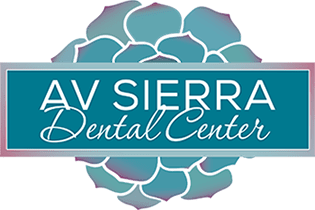Foods and Drinks That Stain Your Teeth
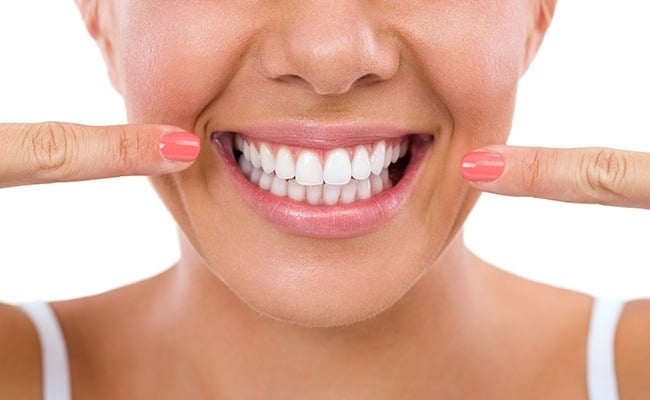
By this point, it’s pretty clear that people want white teeth. As a country, we spend $1.4 billion on consumer teeth whitening products, and the teeth whitening industry generates over $11 billion a year in revenue. We’re not complaining that people are willing to pay to have white teeth, but it does beg the question—what’s staining our teeth in the first place? Foods and drinks cause staining in a couple ways. Foods that are high in acid tend to strip away enamel, which exposes the more vulnerable dentin to staining. Many foods—typically ones with natural bright or rich colors—contain chromogens, substances that adhere to tooth enamel and stain it. Coffee and Tea: Whether you drink coffee or tea to give yourself a quick pick-up, you’re staining your teeth. The acids in these drinks can strip enamel off your teeth—and leave dark stains behind as well. [spacer size=”10″] Wine: Most people think of red wine as a culprit for staining, and it is. It’s acidic and contains stain-causing chromogens. However, most people don’t realize that white wine stains teeth—it’s much more acidic, so it strips tooth enamel and leaves them vulnerable to staining from anything else you’re eating at the time. [spacer size=”10″] Rich Sauces: Sauces that have a rich color—think tomato sauces and curries—combine both acidity and stain-causing pigments that can darken tooth dentin. [spacer size=”10″] Food Coloring: It’s not difficult to imagine why foods high in food coloring stain teeth. After all, they have added chemicals whose sole purpose is to turn the food a bright color! Popsicles and hard candies are big culprits here. [spacer size=”10″] Sugary Drinks: Sports drinks, energy drinks, and soda all contain acids and high amounts of sugar that are damaging to your teeth. They can leave your teeth vulnerable to stains from any food coloring in the drink—and cause cavities as well. [spacer size=”10″] Balsamic Vinegar: All vinegars are acidic, but balsamic vinegar combines the acidity with darker coloring that can stain dentin. [spacer size=”10″] Berries: Cranberries, blueberries, and cherries all contain lots of chromogens and can stain your teeth. In general, if a food (or drink) will leave a stain that is tough to remove from fabric, chances are it will stain your teeth as well. [spacer size=”20″] We’re not recommending that you cut all these foods and drinks out of your diet. It’s just not practical. However, if you want to keep your teeth whiter for longer stretches of time, there are some tips you can use: Avoid sugary drinks and highly processed sugary treats. They tend to cause tooth decay as well as stains. Drink through a straw. If you’re going to have a sugary or acidic drink, using a straw can largely bring the drink past your teeth, reducing the risk of stains. Brush your teeth, rinse your mouth, or even chew sugar-free gum after eating or drinking these trouble foods. It helps remove the stain-causing compounds from your mouth. [spacer size=”20″] You can always use consumer whitening products to reduce stains on your teeth, and in fact, we’ve blogged about them recently! However, if you really want to whiten your teeth as much as possible, we’d love to talk to you and explain the results you can achieve with professional whitening. To learn more about how to reduce the risk of stains or to schedule an appointment, call your Palmdale, CA dentist at 661.202.3542 today!
Dental Travel Tips
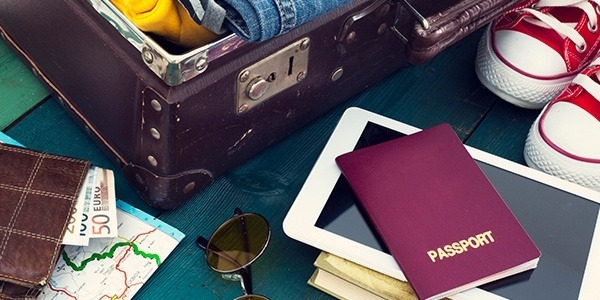
Summer’s approaching fast, and with it comes road trips, family vacations, and travel plans. We’re all for travel and vacations, but just because you’re going on vacation doesn’t mean you can take a break from oral hygiene. We’re not saying you have to pack an electric toothbrush or a Waterpik® if you’re going camping for the weekend, but you should make an appropriate plan to continue caring for your teeth and gums… or else you could end up with an unpleasant souvenir from your trip: a cavity. Make it easy for yourself with travel supplies. Packing for a trip, whether a road trip or an overseas flight, is always a pain. You never have enough room for everything you want to bring, or you forget something you definitely need (like a toothbrush). Prepare ahead by having a small case or bag with all the travel necessities—toothbrush, toothpaste, floss or picks, and mouth rinse, for starters. Travel sizes aren’t the most economical way to purchase supplies, but they are convenient and ensure you can breeze through security checks at the airport. [spacer size=”20″] Ditch the toothbrush case. Sure, it might not feel good to think about your toothbrush jostling up against shampoo, soap, deodorant, and all the other items you’ve got in your toiletries bag… but it’s not as bad as sealing a wet toothbrush inside a plastic case that doubles as a bacteria breeding ground. You can always wash your toothbrush with hot water when you get where you’re going. [spacer size=”20″] Carry on your supplies. A quick brush, floss, and rinse can do wonders to help you feel refreshed on a long flight or when you get to the airport—and going carry-on will save you headaches if your luggage is delayed. But don’t obsess about it. You’ll be able to get new replacements at a drugstore almost anywhere you go. [spacer size=”20″] Stick to your routine. When traveling, it’s all too easy to get caught up in sightseeing, hiking, and dining out. In fact, that may be the entire point of some vacations. But oral hygiene is one of those things where the routine matters. Remember to brush at night before bed, in the morning after waking up, and to floss at least once a day. [spacer size=”20″] If in doubt, use bottled water. In foreign countries, especially ones that are off the beaten path, play it safe by using bottled water for your oral hygiene routine. As a rule of thumb, if you’re going to avoid drinking tap water, then avoid using it for brushing. Thankfully, in these places, most hotels will provide a complimentary bottle or two every day. [spacer size=”20″] Stick with healthy snacks. When you’re on the go, whether in the car or out sightseeing, there’s a temptation to pick up junky snacks for a quick energy boost. Avoid doing so if you can. Not only is the energy from a candy bar or bottle of soda short-lived, sugary snacks and drinks give bacteria plenty of fuel to cause tooth decay. If you do give into temptation, you’ve packed your toothbrush in carry-on for a reason. Use it. And if you like to chew gum on a plane, stick with sugar-free. [spacer size=”20″] Finally, if you’re planning a long trip, consider a check-up before you go. When your departure date gets close, it’s easy to put off routine tasks until after your vacation. If one of those tasks is your dental checkup, reconsider. If you’ve got a nagging concern, like an achy tooth, get it taken care of before your vacation. The last thing anyone wants is a full-blown toothache ruining your vacation! [spacer size=”20″] We hope you’re all set to enjoy a great summer vacation, but don’t forget to take care of your teeth when you’re traveling. If you need to set an appointment for a check-up before you go, or if your schedule is just a little bit simpler during the summer months, call or visit our website to make your next appointment today.
Avoid Bad Breath for Good
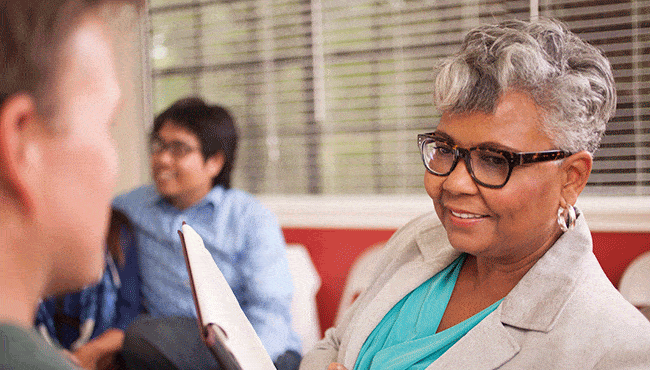
In almost every social situation, there is one thing most people are concerned about: halitosis, better known as bad breath. It can be embarrassing for you, uncomfortable to other people, and potentially a deal breaker for a job interview or date. To make it even more difficult to manage, our bodies have a great way of blocking out constant smells, making it very hard to determine if we have bad breath before it’s too late. How do I know if I have bad breath? You can easily test how your breath smells to others with this simple test. Lick part of your arm and smell it after about 10 seconds. Now, licking your arm in public may seem weird (and have its own social consequences), this test can give you a good indication of how your breath smells. However, it may not always be accurate. The best thing you can do is be aware of what causes bad breath and prevent it before it happens to you. How do I Make my Breath Smell Better? Hygiene The most common cause of bad breath is straightforward; you have a dirty mouth. Bacteria live in your mouth, and when you eat, they eat. These odors are made worse by your tongue, which acts like a fleshy dish sponge, absorbing food particles and bacterial byproducts. If you think this is your issue–and it is best place to start–the best remedy to avoid bad breath is to brush and floss daily. This will help eliminate leftovers for the bacteria to eat. To further eliminate any odor, open your mouth and look at the back of your tongue. If looks like it’s covered in a white or brown substance, this could be the main source of your bad breath. Brush as far back on your tongue as you can with your toothbrush, or use a tongue scraper, which will do the job more efficiently. Dry Mouth Saliva keeps the mouth clean by washing away bacteria, plaque, and keeping the acidic levels in your mouth at the proper level. If your mouth is chronically dry, bacteria can take over, leading to bad breath. If you are experiencing dry mouth, be sure you are drinking plenty of water. Additionally, check to see if any medication you are taking causes dry mouth. If so, talk to your doctor about solutions or a potential change in medication, that can prevent your dry mouth and bad mouth smell. Specific Types of Food There are certain types of food that cause bad breath. No matter what you do, you won’t be able to avoid the unwelcome baggage they carry. Coffee, tuna, onion, and garlic have a tendency to stick around even after you brush your teeth. For example, as garlic is digested, sulfur compounds permeate your lungs and skin, meaning there isn’t much you can do to hide the smell. For the sake of everyone around you, don’t go to hot yoga after eating a clove of garlic. Disease Bad breath can also be a sign of something more significant. If you have ruled out the issues above, bad breath (along with other symptoms) can be related to diabetes, gum disease, kidney disease, and many more chronic conditions. If you think your bad breath is connected to a more serious ailment, contact your family doctor to learn more. How Do You Get Rid of Bad Breath That Won’t Go Away? If you can’t improve the smell of your breath on your own you may need to talk to your dentist. Dentists are able to look at your mouth and see what the potential cause of your bad breath is. They will have the expertise to notice if it’s plaque, debris on your tongue, or periodontal disease. They can also prescribe you medicine for halitosis such as antimicrobial toothpaste and mouthwash to take care of the issue. The dentist may determine that the issue may not be located in your mouth, and would then refer you to your family doctor. Come visit Drs. Oh and Couto at AV Sierra Dental Center if you have any more questions or concerns about halitosis.
Why do I Need Professional Teeth Cleanings?

Why do I Need Professional Teeth Cleanings? Let’s look at five reasons why you should get your teeth regularly cleaned. 1. We check for oral cancer With cancer, the sooner it’s detected the better chance you have of successfully getting rid of it. Oral cancer is no different. During each teeth cleaning, we check for any signs of oral cancer. 2. Cleanings help prevent cavities Brushing and flossing every day will do wonders in maintaining a healthy mouth. But, sometimes you may forget to floss, or maybe you had a few too many sodas and candy bars. Our dental hygienists will ensure that your mouth is free of plaque, and can also give you tips for your at-home cleaning if they see something you may not be doing. 3. Cleanings help prevent gum disease Gum disease can easily creep up on anyone. It is often painless until it becomes a bigger problem. When diagnosed with gingivitis, it can still be reversed with proper gum maintenance. Once gingivitis progresses to periodontal disease, it requires ongoing professional care to prevent further damage to your mouth. Professional cleanings at twice a year drastically reduce the risk of gum disease ever starting. 4. Having a healthy mouth contributes to a healthy life Poor oral health has been connected with diagnoses for diabetes, heart disease and pregnancy complications. Keeping your gums and teeth healthy will help prevent the occurrence of these diseases. 5. Regular cleanings are cheaper than taking care of oral problems Receiving two professional cleanings a year may be an expense you don’t like to see. However, teeth cleanings are much cheaper than other procedures, such as root canals, scaling and root planing, and dental implants. There is nothing better than a freshly cleaned mouth! Our dental hygienists will make sure you have pain free experience, and you can leave knowing you’ve taken a giant leap forward in maintaining a healthy smile. If you have more questions about our professional teeth cleanings, or if you’d like to schedule an appointment, please call your Palmdale dentist at 661.202.3542.
Teaching Kids to Care for Their Teeth
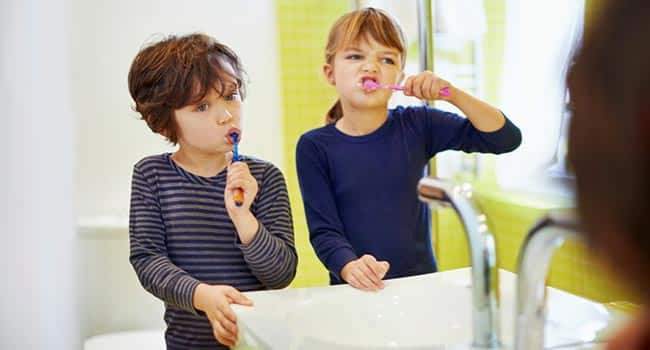
How to Teach Kids to Care for Their Teeth (and a Little about Why and When, Too) If you’re a parent, you’ve probably tried every type of motivation—reasoning, cajoling, nagging, threatening punishments, even bribery—to get your kids to do things that they just really need to do. Eating vegetables. Getting dressed for school. Going to bed. And yes, brushing their teeth. Oral Hygiene Is Important Good oral hygiene is about more than a winning smile. It contributes to our sense of self-esteem and confidence—and what parent doesn’t want a child who’s happy, confident, and proud of him or herself? What you might not know is that oral health contributes greatly to your—and your child’s—long-term holistic health. Poor oral health is linked to diseases including obesity, diabetes, and even heart disease. Encouraging your children to take care of their teeth sets them up for a lifetime of good oral health—and good health in general. Start early—but focus on the big picture One way to make sure children take oral hygiene seriously is by starting early. Wipe their gums with a soft washcloth after bottle feedings, and once their baby teeth come in, brush them twice a day with a soft toothbrush and water. Toddlers aged two to four can begin brushing by themselves, preferably for two minutes, but don’t use fluoride toothpaste until your child knows not to swallow it. Start flossing your children’s teeth around the same time, as their teeth start to fit closely together. If you haven’t already brought them in for a first dentist’s visit, now is the time to start as well. Children don’t have the coordination to do as thorough a job as adults. They may not even be able to use dental floss until they’re 10 or so.; (Floss picks are easier for young kids.). But the key is to begin building good oral hygiene habits early on in life. Make sure your children understand the basics: Brush twice a day. Floss every day. Avoid sugary foods and drinks. Visit a dentist regularly for checkups. Set a good example. “Do what I say, not what I do.” There’s always a temptation to tell others—kids, especially—to behave a certain way, even if we don’t always do so ourselves. Be kind to strangers. Share. Be generous. But children learn more by watching their parents and friends every day. If you take good care of your teeth, they’ll learn implicitly that oral hygiene is important and worth practicing. It’s understandable that bathroom routines are “private time,” but don’t be shy about brushing or flossing in front of little ones. They’ll pick up good habits that way. Make it fun! What parent hasn’t turned a boring or unpleasant chore into some sort of a game in order to convince a child to participate? The answer: zero. And that’s a fact. Here are some simple ways you can turn oral hygiene into something more fun for kids: Let Them Pick Their Toothbrush Kids often feel like they don’t have choices—so let them pick out a toothbrush with their favorite character on it or a toothpaste flavor they like. There are so many cute character-themed toothbrushes on the market that it should be easy to find a fun toothbrush to help make brushing enjoyable. Having a fun brush will help kids be more invested in brushing their teeth. You may even find a character-themed toothbrush you like for yourself. Play Creative Dental Games Turn brushing their teeth into something fun instead of a nightly chore. Encourage them to brush their stuffed toys’ teeth while telling them how important it is to brush and floss. Colgate has several dental game ideas that teach kids the importance of caring for their teeth and gums. Read Books About Teeth, Cleaning Teeth and Visiting the Dentist Many kids love bedtime stories. Use this fun activity to help prepare them to visit the dentist by reading them a story about dental care. Reward Them When you child does a good job brushing and flossing give them a reward. Candy may not be the best option here but perhaps you can give them a quarter or let them pick the 2nd book to read at bedtime. Perhaps a dental book? Remember, we’re here to help. Day-to-day hygiene routines are the foundation of lifelong oral health, so there’s no substitute for the time you spend with your children, teaching them the fundamentals of brushing and flossing. But at AV Sierra Dental Center, we’re here to help. When you bring your child in for a visit, let us know if you have any concerns or issues you’d like to discuss. We want to make sure that your kids have a positive, friendly, age-appropriate dental experience each and every time they come to our office.
